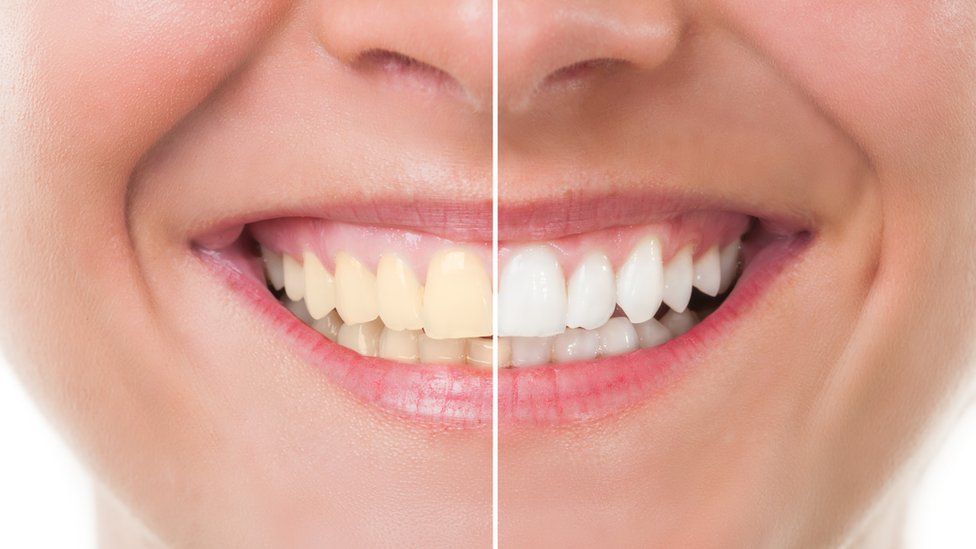There are numerous teeth whitening systems and products that include whitening toothpaste gels, rinses, strips, and trays. These can be obtained over-the-counter or from the dentist.
The process of teeth whitening is best suited for people who have healthy teeth that are unrestored, meaning, with no fillings. Individuals with yellow-toned teeth are responsive to whitening treatments.
Whitening toothpaste
All kinds of toothpaste get rid of surface stains since they contain mild abrasives. Some whitening toothpaste will contain gentle polishing or chemical agents that provide additional stain removal efficiency.
Certain teeth whitening toothpaste lighten surface stains and do not contain bleach. Over-the-counter whitening products will typically have carbamide peroxide or hydrogen peroxide. These chemicals lighten deep in the tooth. Whitening toothpaste helps lighten the colour of the tooth by about one shade.
Whitening strips and gels purchased over-the-counter
Whitening gels are peroxide-based gels that are clear and are typically applied with a small brush directly on the surface of the teeth. Instructions will vary depending on the peroxide’s strength. It is critical to follow the directions on the product label carefully. Results can be seen in several days, and the final results will last for about four months. Completing treatment will range from 10 to 14 days. You may need to apply them a couple of times each day. You can purchase whitening strips as well as gels from your pharmacy, dentist, or online.
Whitening rinses
Current whitening products available over-the-counter include whitening rinses. Comparable to most mouthwashes, they help freshen breath and mitigate dental plaque as well as gum disease. However, these products will also contain hydrogen peroxide that whitens the teeth. To see results, it may take up to 12 weeks for these products to have full effect.
Whitening rinses are swished around for a minute a couple of times a day prior to brushing your teeth. However, some experts believe that rinses may not be as efficient as other over-the-counter whitening products since the rinse will only come in contact with the teeth for a short period of two minutes per day compared to strips. It may have less of an effect. But it is possible to enhance whitening mouthwashes by combining them with other whitening treatments such as rinsing first and then brushing the teeth using a whitening toothpaste.
Safety tips in teeth whitening
- Directions
It is critical to follow directions. Never leave the teeth whitener products on longer than the directions required, or you might end up with sore gums and leave yourself vulnerable to other health issues. After you whiten your teeth, steer clear of soda, sports drinks, as well as other beverages that are acidic for at least two hours to protect your teeth.
- Sensitive teeth
It is critical to protect sensitive teeth. It is possible that your teeth may suffer a bit of sensitivity after whitening them, but it will only last for a short period. It might be less of a problem if your teeth and gums are healthy. If the whitening process troubles you, halt the procedure and consult with your dentist. Gel trays, which are worn over the teeth like a mouthguard, can also be bothersome to your gums if they are ill-fitting. It is best to stop using the product if you start having problems with them.
- Please don’t overdo it
You might be asking how much whitening is too much; if you follow the directions on the product and get a good result, touchup sessions once a month is typically enough. When your teeth have already reached the shade you like, you will need to have the bleaching sessions done a couple of times a year or less.
Bright white teeth immediately level up your smile and boost your confidence. Home treatment teeth whitening options are effective if used correctly.
